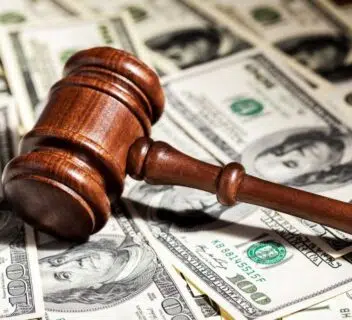Most Common Bicycle Accident Injuries: What You Need to Know
Bicycle accident injuries vary from minor scrapes to serious harm. Knowing these injuries can help you stay safe. This article reveals common bicycle accident injuries and tips for prevention.
Key Takeaways
- Common bicycle accident injuries include head injuries, broken bones, and soft tissue injuries, which can have serious long-term effects.
- Wearing a helmet and other protective gear significantly reduces the severity of head injuries and enhances visibility, helping prevent accidents.
- Following safety precautions, seeking immediate medical attention after an accident, and understanding legal rights are essential for recovery and securing compensation.
Common Bicycle Accident Injuries
Bicycle accidents can lead to severe and lasting injuries that significantly affect the lives of those involved, given that they are among the top causes of harm in both bicycle and car collisions. These incidents often result in a range of accident injuries.
The areas most frequently harmed during bicycle accidents include:
- Arms
- Legs
- Head
- Face
- Abdomen
- Neck
Such mishaps may give rise to an array of injuries from minor scrapes to critical conditions that require extensive medical treatment, including attention for hand wounds as well as musculoskeletal damage requiring prolonged rehabilitation efforts.
Awareness about common bicycle accident injuries is crucial for adopting measures aimed at ensuring safety while cycling. In what follows, we’ll delve into specific types such as head trauma, fractures, and soft tissue damage.
Head Injuries
Head injuries are a common consequence of bicycle accidents, varying in intensity from minor to critical. Bicycle incidents frequently result in mild head trauma, such as superficial scrapes, contusions, and slight lacerations. On the other hand, grave forms of head injury like skull fractures, profound cuts and traumatic brain injuries can leave enduring impacts on an individual’s well-being and day-to-day life.
The use of a helmet that fits correctly plays a crucial role in diminishing the chances of sustaining severe head traumas by up to 60% and reducing occurrences of traumatic brain injuries by approximately 53%. To helmets, wearing padded attire greatly reduces the severity level when mishaps occur while cycling. For their safety against potential fatal head wounds, cyclists should make it a routine practice to wear helmets along with other protective gear.
Enhancing one’s visibility through brightly colored or reflective garments significantly lessens accident risks for cyclists. By taking these measures, not only do bicyclists shield themselves from harmful head traumas, but they also achieve more relaxed biking experiences knowing they’ve taken steps toward ensuring personal protection.
Broken Bones and Fractures
Bone fractures and breaks are frequent consequences of bicycle accidents, typically as a result of collisions or tumbles. In these incidents, leg bone fractures are common due to the force experienced during a fall or being hit while on a bicycle. The femur—which is the largest bone in our body—often demands surgical intervention if broken during cycling accidents. Clavicle fractures stand out as particularly prevalent among cyclists involved in such mishaps, potentially leading to complex bone breakages.
In bike crashes where riders instinctively reach out an arm to cushion their descent, collarbones often sustain clavicle fractures. These types of injuries may necessitate several surgeries and prolonged recovery time, which can greatly disrupt one’s everyday life and overall well-being.
Understanding the inherent dangers and opting for proper protective attire can minimize the chances of experiencing severe injuries that could lead to intense pain and disability for cyclists.
Soft Tissue Injuries
Cyclists are frequently at risk of soft tissue injuries, which typically arise from falls or accidents while riding. A common injury among them is road rash, where skin abrasions occur due to contact with the pavement during a fall. Such an injury can cause intense pain and has the potential for infection if not adequately cared for.
Beyond road rash, cyclists may suffer from muscle and tendon damage due to sudden impacts that occur during these incidents. In cases of severe soft tissue injuries, there’s also the possibility of nerve damage that could lead to chronic pain and impair function in the long term. By being aware of these injuries and practicing cautionary measures, cyclists aim to reduce their chances of sustaining a serious injury when they’re out on their rides.
Severe Injuries and Long-Term Effects
Some injuries sustained in bicycle accidents may be relatively minor, while others are profound and can drastically alter one’s life. Over 60% of deaths related to bicycle accidents involve head injuries, underscoring the critical importance of helmet use when cycling. Between a quarter and half of injured bicyclists experience concussions or other forms of head trauma that could result in chronic cognitive issues and permanent disabilities.
Injuries incurred from a bicycle accident often lead not only to immediate harm but also long-term disability and significant alterations in day-to-day living. It’s vital for both prevention strategies and rehabilitation processes to take into account the possible enduring consequences of these types of injuries.
Subsequently, we will delve into specific grave injury types, including damage to the spinal cord as well as dental and facial traumas, plus internal bleeding or organ injury. We aim to shed light on their repercussions along with available treatment avenues.
Spinal Cord Injuries
Among the severe consequences of bicycle accidents, injuries to the spinal cord stand out as particularly catastrophic, frequently resulting in considerable challenges with movement and potentially leading to complete paralysis. Such injuries are characterized by a cessation of function below the level where the spinal cord has been damaged, profoundly affecting a person’s autonomy and mobility.
The journey to recovery for victims who have sustained spinal cord injuries is typically long and grueling, involving an extensive regimen of rehabilitation and therapy along with numerous surgeries. The enduring impact of sustaining damage to one’s spine can be transformative in nature, demanding a holistic plan for care and assistance aimed at maximizing the victim’s independence following such life-altering events.
Dental and Facial Injuries
Accidents involving bicycles can result in significant dental and facial injuries, including tooth loss and harm to the jawline, as well as other facial bones. Such incidents often involve fractured jaws and shattered cheekbones, necessitating surgical reconstruction.
Injuries to the face sustained during bicycle accidents may have enduring consequences both cosmetically and functionally, affecting an individual’s looks along with their capacity for routine tasks. Awareness of these potential injuries, coupled with wearing helmets and appropriate safety equipment, can diminish the likelihood of serious dental or facial harm.
Internal Bleeding and Organ Damage
In the aftermath of a bicycle accident, internal injuries such as bleeding and damage to organs are severe consequences that necessitate prompt medical intervention in order to stave off grave complications. Should there be internal bleeding due to an accident involving a bicycle, it may cause considerable harm to organs and typically calls for emergency surgical procedures.
It’s imperative that victims receive swift medical assessment because certain injuries might not be obvious at first glance, including internal bleeding or traumatic brain injuries. Securing immediate medical care is vital for detecting concealed injuries and averting potentially fatal outcomes.
Immediate Steps After a Bicycle Crash
Following a bicycle crash, it’s vital to prioritize your health (and your legal rights) to aid in your recovery and guarantee necessary assistance. It is imperative that you seek immediate emergency medical assistance, if necessary, and that you follow-up with medical professionals for even seemingly minor injuries. That way, you’ll obtain an appropriate medical evaluation and ward off any potential adverse outcomes. Comprehending your legal rights, along with the appropriate measures post-crash, can facilitate obtaining the requisite financial recompense for recuperation.
Various routes are available for bicyclists seeking restitution, commonly involving insurance claims proceedings. Adhering to advised protocols following a crash empowers victims as they endeavor through the complex task of claiming compensation and receiving support throughout their healing journey.
Seeking Medical Attention
It is imperative to seek prompt medical care following a bicycle accident for the sake of one’s health and well-being. Delaying an assessment at the emergency department, even for seemingly slight injuries, can lead to more severe issues.
Obtaining a medical examination after sustaining minor injuries in a bicycle accident is critical in order to avoid Problems. By prioritizing immediate healthcare, individuals ensure that they receive appropriate treatment and diminish the chance of enduring persistent complications.
Collecting Evidence
Gathering evidence at the accident site is crucial for supporting claims and enhancing legal cases. Photos taken from the scene of the accident can greatly reinforce any subsequent claims or legal actions. Obtaining contact details for witnesses is essential since their testimonies can corroborate your account of what occurred.
By meticulously recording the accident through photographs and statements from eyewitnesses, you create a robust foundation for seeking compensation.
Contacting an Attorney
It’s essential to seek legal advice swiftly following a bicycle accident in order to comprehend your entitlements and the various legal routes at your disposal. Securing the services of an attorney with expertise in bicycle accidents soon after an incident can aid in safeguarding crucial evidence and upholding your legal protections.
For a complimentary consultation with a qualified personal injury attorney within our network of lawywers, reach out to 1-800-THE-LAW2. Legal counsel assists victims of accidents in managing the intricacies involved within the judicial system and obtaining rightful recompense.
Recovery and Compensation Options for Bicyclists
Bicycle accident compensation typically encompasses medical expenses, lost wages, and pain and suffering. Understanding the recovery and compensation options available can help accident victims secure the support they need for their recovery.
Next, we’ll explore types of compensation, including medical expenses and lost wages, property damage claims, and wrongful death claims, to provide a comprehensive overview of options available for accident victims.
Medical Expenses and Lost Wages
Individuals involved in bicycle accidents have the right to pursue financial restitution for medical expenses and rehabilitation fees related to their injuries as part of their compensation pursuits. Expenses incurred due to surgeries, emergency care, and continuous rehabilitation services following a bicycle accident are included within these medical costs.
Victims of such accidents can seek remuneration for income lost owing to an inability to work caused by their injuries. By obtaining monetary recompense for both healthcare expenditures and missed earnings, those affected by bicycle accidents can concentrate on healing without the additional worry of economic strain.
Property Damage Claims
Cyclists have the right to file claims for damages to their bicycles and personal belongings resulting from an accident. Compensation for property damage may cover repairs or replacements for bicycles and personal items affected in the accident.
Bicyclists can claim compensation not only for their damaged bicycles but also for any personal property that was affected in the accident. Understanding their rights and the claims process helps accident victims secure compensation for property damage and focus on recovery.
Wrongful Death Claims
When a bicycle accident leads to the tragic outcome of death, the surviving relatives are entitled to file wrongful death lawsuits in an effort to obtain reparation for their profound loss. Such compensation can cover costs associated with funerals, lost wages, and the psychological pain endured by those left behind.
It is crucial for family members mourning cyclists who have perished in accidents to be aware of their legal entitlements. This knowledge empowers them to claim appropriate damages as they seek a sense of justice on behalf of the individual they’ve lost.
Safety Precautions for Bicyclists
It is crucial for cyclists to adhere to vital safety guidelines while navigating roads alongside vehicles. Even a slight bicycle accident has the potential to cause enduring injuries that can drastically impact an individual’s quality of life. Cyclists who implement preventative safety actions can diminish the likelihood of accidents and ride with increased tranquility.
In our forthcoming discussion, we will delve into numerous protective measures such as employing appropriate protective gear, complying with traffic regulations, and maintaining vigilance during bicycle rides.
Proper Use of Protective Gear
Protective gear, including helmets and clothing with bright colors and reflective materials, lessens the risk of injuries while cycling by making riders more visible to others on the road. The use of bicycle helmets is particularly important for cyclist safety.
Cyclists who do not wear appropriate protective equipment can greatly diminish their chances of sustaining severe injuries should an accident occur.
Adhering to Traffic Laws
Bicycle riders are encouraged to make use of bike lanes whenever they are provided, as this helps prevent clashes with motor vehicles and other forms of transportation. By following traffic regulations, cyclists not only safeguard themselves but also protect fellow bicycle riders and ensure a safer environment for all involved in bicycling.
Equipping bicycles with functioning lights enhances their visibility when there is insufficient natural light, which consequently decreases the likelihood of accidents involving cyclists.
Staying Alert and Aware
Cyclists can notably diminish the likelihood of accidents by staying attentive and conscious of their environment. It is essential for them to remain vigilant, especially at crossroads, to avert mishaps. Alertness allows cyclists to adeptly steer through their surroundings and dodge possible dangers.
Summary
Bicycle accidents can result in a wide range of injuries, from minor abrasions to severe, life-altering conditions. Understanding the common bicycle accident injuries, including head injuries, broken bones, and soft tissue injuries, is crucial for prevention and effective response. Severe injuries such as spinal cord injuries, dental and facial injuries, and internal bleeding require immediate medical attention and can have long-term impacts on the victims’ lives.
Taking immediate steps after a bicycle crash, such as seeking medical attention, collecting evidence, and contacting an attorney, is essential for securing the necessary support and compensation. Accident victims have various recovery and compensation options, including claims for medical expenses, lost wages, property damage, and wrongful death. By following safety precautions, such as using protective gear, adhering to traffic laws, and staying alert, cyclists can significantly reduce the risk of accidents and enjoy their rides safely.
Frequently Asked Questions
The most common injuries in bicycle accidents are head injuries, broken bones, and soft tissue injuries like road rash.
It’s crucial to prioritize safety measures, such as wearing a helmet, to minimize these risks.
It is essential to wear a helmet because it greatly reduces the chance of sustaining severe head and brain injuries in the event of a bicycle accident.
By choosing to prioritize safety through the use of a helmet, you can guard yourself against consequences that could drastically change your life.
After a bicycle crash, it’s crucial to seek medical attention first, then collect evidence from the scene, and lastly, consider contacting an attorney to understand your legal rights and options.
Yes, you can claim compensation for property damage, including your bicycle and personal belongings, after a bicycle accident.
It’s important to document the damage and gather evidence to support your claim.
Wrongful death claims in bicycle accidents are legal actions taken by the deceased cyclist’s family to obtain compensation for losses like funeral costs, lost income, and emotional suffering.
These claims aim to hold responsible parties accountable and provide financial relief to grieving families.




